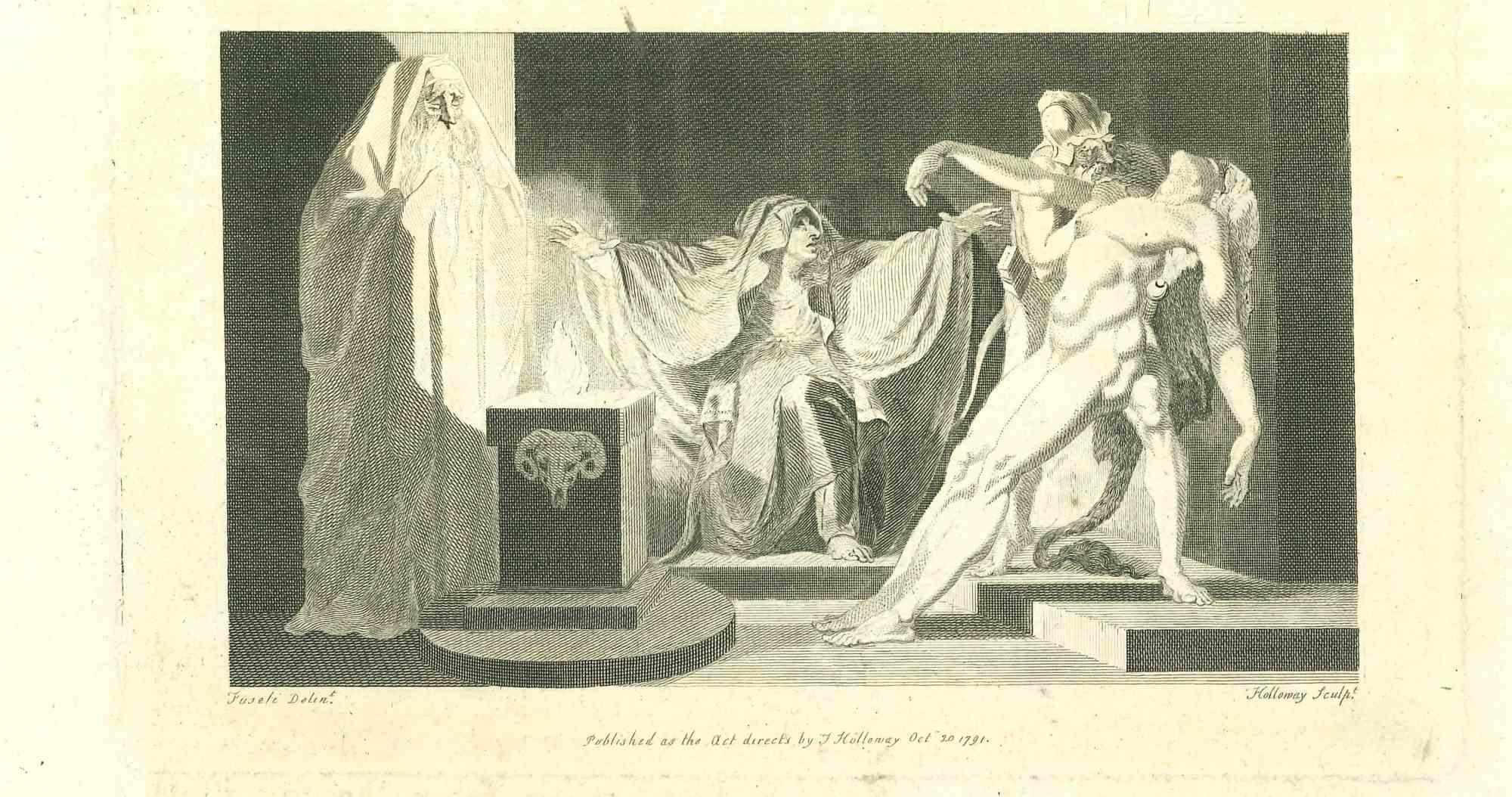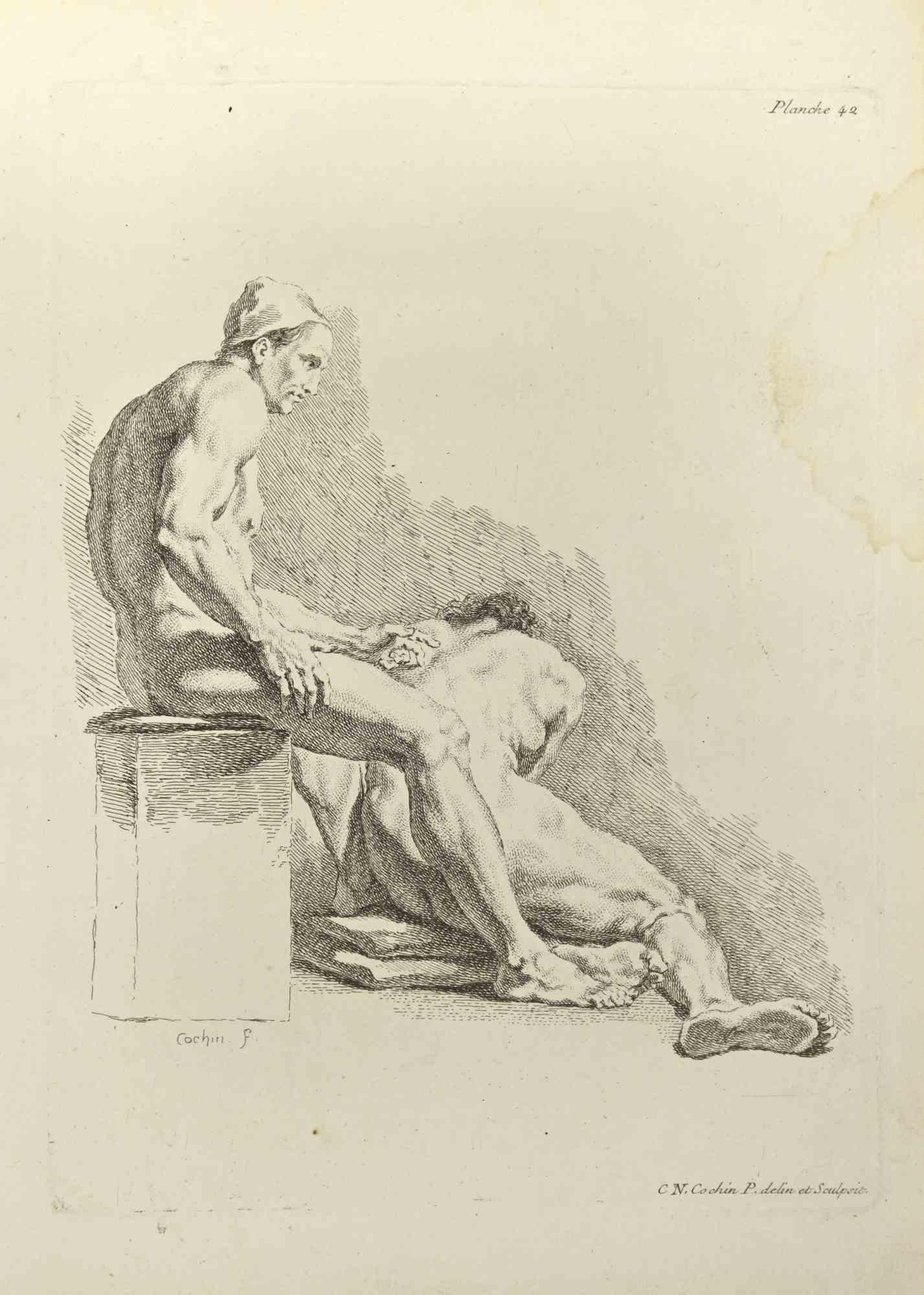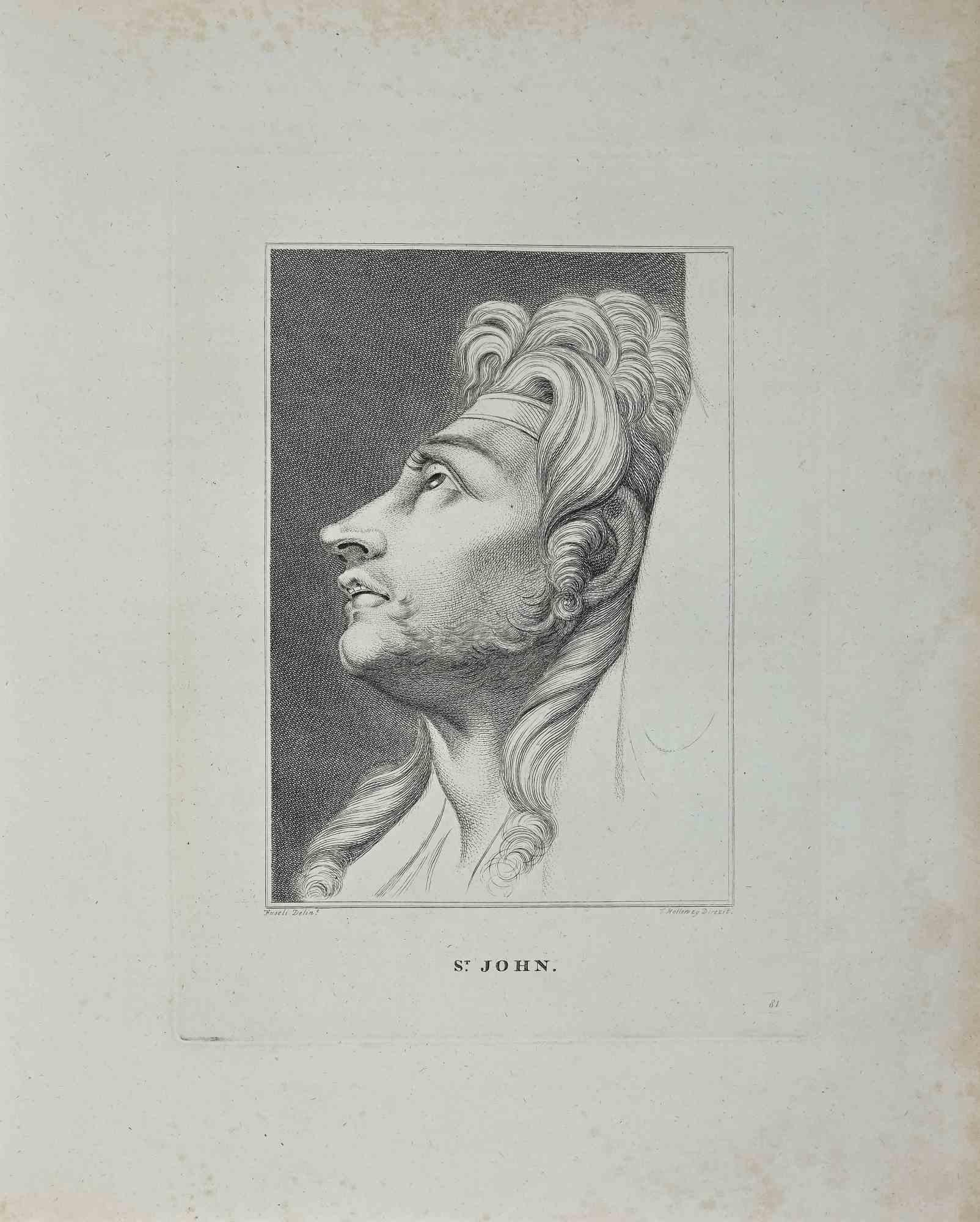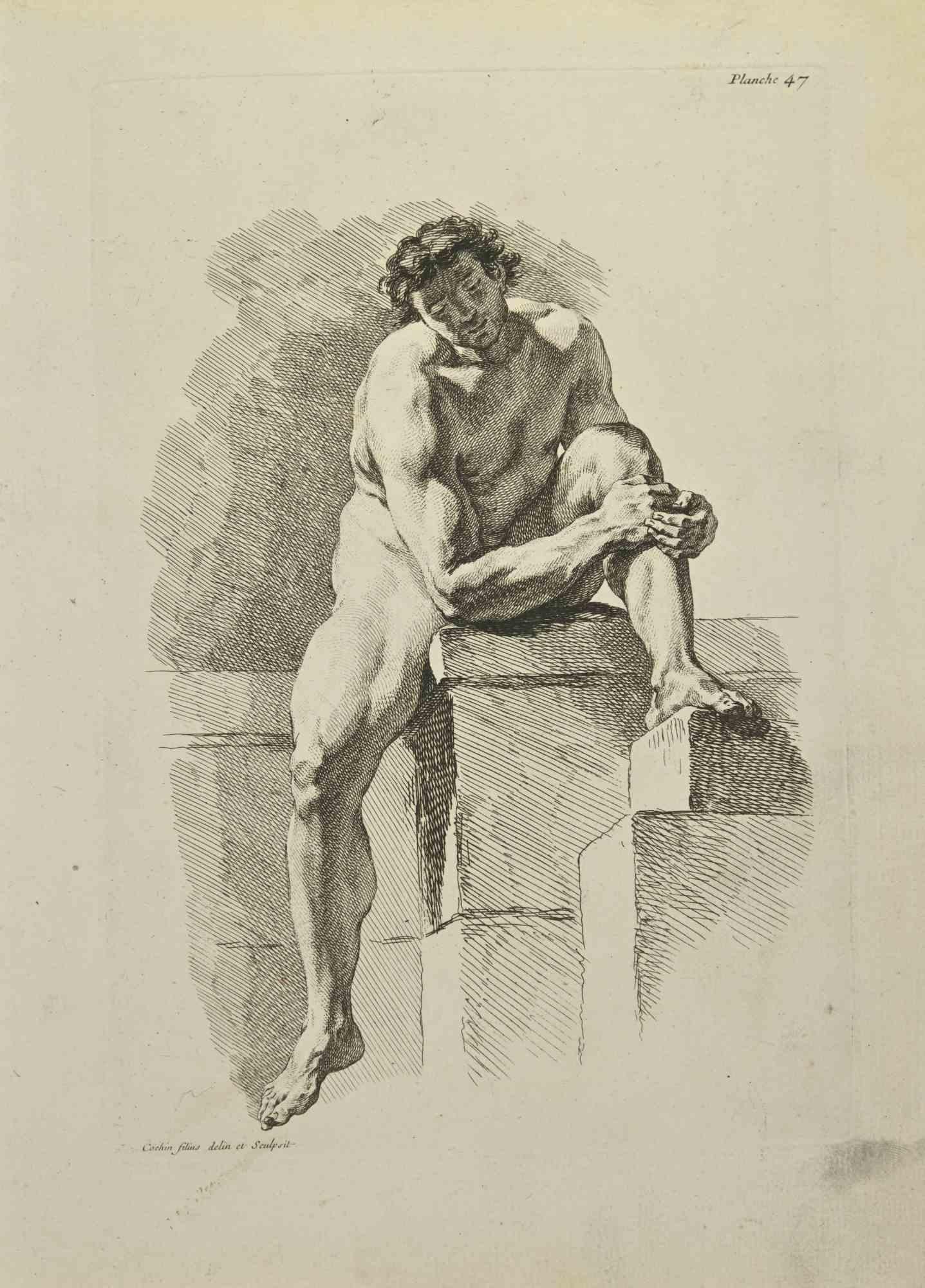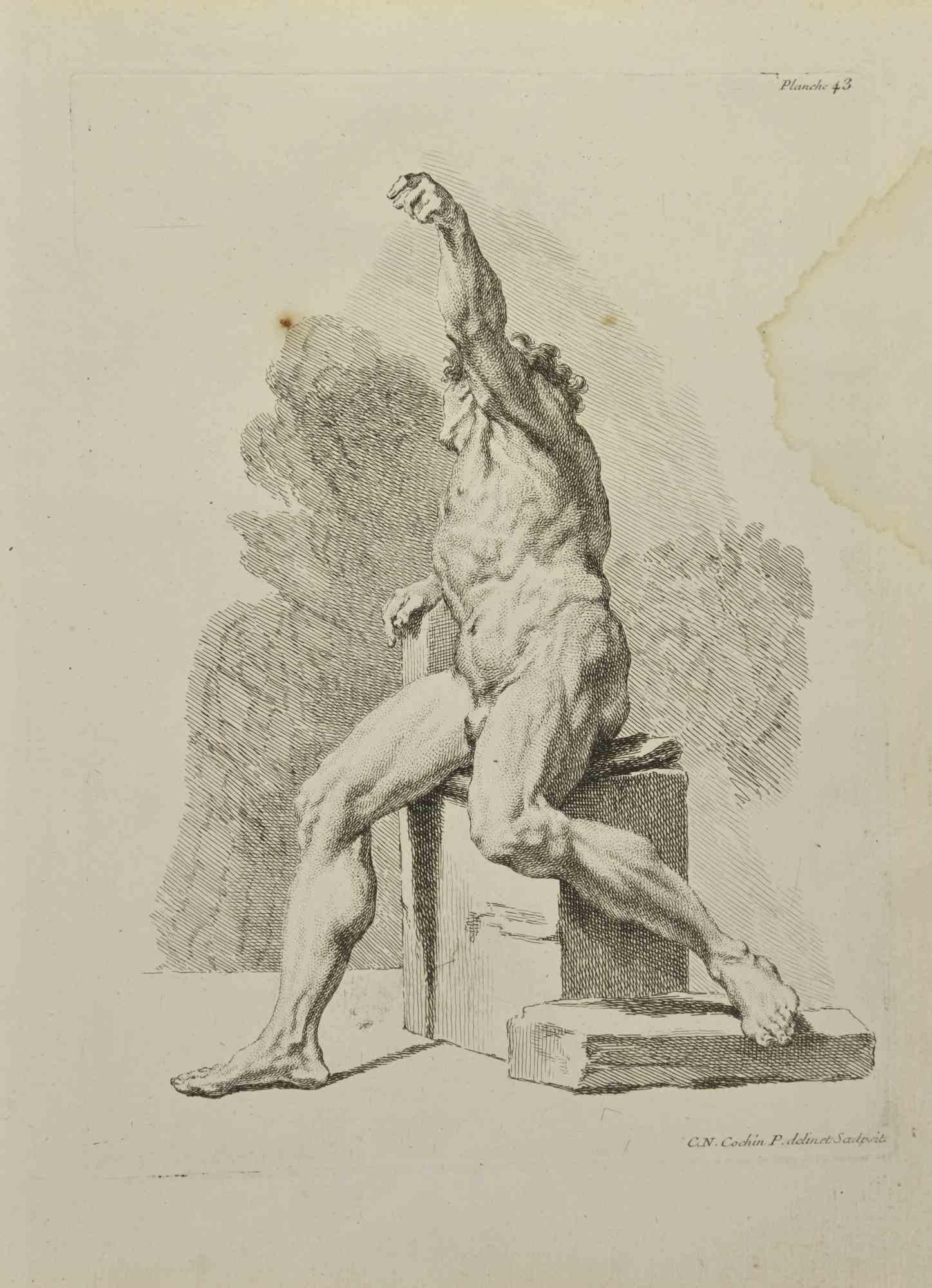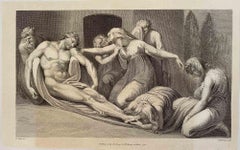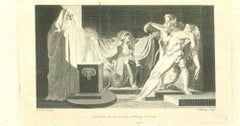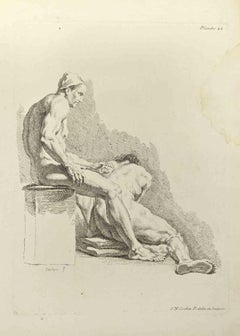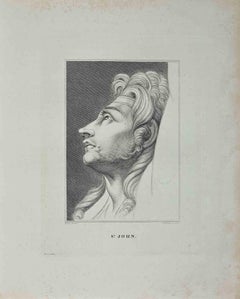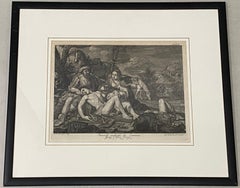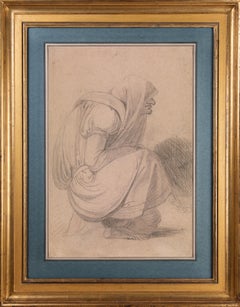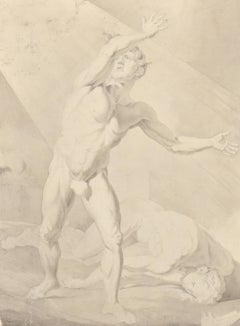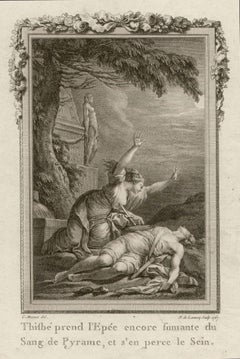Items Similar to Iron Arm, Musing over the body of Meduna - Etching after Heinrich Fuseli - 1791
Want more images or videos?
Request additional images or videos from the seller
1 of 2
Iron Arm, Musing over the body of Meduna - Etching after Heinrich Fuseli - 17911791
1791
$334.92
$446.5625% Off
£255.64
£340.8525% Off
€285
€38025% Off
CA$472.07
CA$629.4325% Off
A$518.43
A$691.2425% Off
CHF 270.73
CHF 360.9825% Off
MX$6,187.66
MX$8,250.2225% Off
NOK 3,429.93
NOK 4,573.2425% Off
SEK 3,196.83
SEK 4,262.4425% Off
DKK 2,171.15
DKK 2,894.8725% Off
About the Item
"Iron arm, musing over the body of Meduna" is an original etching on ivory-colored paper realized in 1791 by Thomas Holloway d'apres Heinrich Fuseli
Signed on the plate on the lower.
Titled on the lower center.
Good conditions.
- Creation Year:1791
- Dimensions:Height: 6.7 in (17 cm)Width: 8.67 in (22 cm)Depth: 0.04 in (1 mm)
- Medium:
- Movement & Style:
- After:Heinrich Fuseli
- Period:1790-1799
- Framing:Framing Options Available
- Condition:Insurance may be requested by customers as additional service, contact us for more information.
- Gallery Location:Roma, IT
- Reference Number:Seller: T-1226691stDibs: LU65038609222
About the Seller
4.9
Platinum Seller
Premium sellers with a 4.7+ rating and 24-hour response times
1stDibs seller since 2017
7,818 sales on 1stDibs
Typical response time: 1 hour
- ShippingRetrieving quote...Shipping from: Monaco, Monaco
- Return Policy
More From This Seller
View AllThe Deposition - Original Etching after Heinrich Fuseli - 1791
By Heinrich Fuseli
Located in Roma, IT
The deposition is an original etching on ivory-colored paper realized in 1791 by Thomas Holloway d'apres Heinrich Fuseli
Signed on the plate on the lower.
Titled on the lower cente...
Category
1790s Modern Figurative Prints
Materials
Etching
The Fainting - Original Etching by Thomas Holloway - 1810
By Thomas Holloway
Located in Roma, IT
The Fainting is an original Etching realized by Thomas Holloway after Heinrich Fussli in 1810.
The little artwork is on a yellowed paper.
Good condition, signature on the lower rig...
Category
1810s Modern Figurative Prints
Materials
Etching
Anatomy Studies - Etching by Nicholas Cochin - 1755
Located in Roma, IT
Anatomy Studies is an etching realized by Nicholas Cochin in 1755.
Good conditions with slight folding and a yellowish stain on the right margin.
Signed in the plate.
The etching ...
Category
18th Century Old Masters Figurative Prints
Materials
Etching
$183 Sale Price
40% Off
Portrait of S. John - Original Etching by Heinrich Fuseli - 1810
By Heinrich Fuseli
Located in Roma, IT
Portrait of S. John is an original artwork realized by Heinrich Fuseli (1741 - 1825).
Original Etching from J.C. Lavater's "Essays on Physiognomy, Designed to promote the Knowledge ...
Category
1810s Old Masters Portrait Prints
Materials
Etching
Anatomy Studies - Etching by Nicholas Cochin - 1755
Located in Roma, IT
Anatomy Studies is an etching realized by Nicholas Cochin in 1755.
Good conditions with foxing and folding.
Signed in the plate.
The artwork is depicted through confident strokes....
Category
1750s Surrealist Figurative Prints
Materials
Etching
$183 Sale Price
40% Off
Anatomy Studies - Etching by Nicholas Cochin - 1755
Located in Roma, IT
Anatomy Studies is an etching realized by Nicholas Cochin in 1755.
Good conditions with foxing and folding.
Signed in the plate.
The artwork is depicted through confident strokes....
Category
1750s Surrealist Figurative Prints
Materials
Etching
$183 Sale Price
40% Off
You May Also Like
Carlo Lasinio "Ermina and the Wounded Tancredi" Original Etching C.1820
Located in San Francisco, CA
Carlo Lasinio "Ermina and the Wounded Tancredi" Original Etching C.1820
Remarkable early 19th century etching
Plate dimensions 14.75" wide 11.25" high
The frame measures 24.75" wi...
Category
Early 20th Century Figurative Prints
Materials
Etching
Drawing of a captive woman
By Henry Fuseli
Located in London, GB
Collections:
Sir Thomas Lawrence, who acquired the contents of Fuseli’s studio;
Susan, Countess of Guilford, née Coutts (1771-1837), acquired from the Lawrence estate;
Susan, Baroness North (1797-1884), daughter of the above;
Mrs A. M. Jaffé, acquired in France, c. 1950 to 2016.
Black chalks, on buff-coloured paper
Stamped verso: ‘Baroness Norths Collection / of Drawings by H Fuseli Esq.’
Framed dimensions: 26.38 x 20.63 inches
This boldly drawn sheet depicting a seated figure was made by Fuseli at an important and highly productive moment in his career. The monumental drawing is closely related to another sheet by Fuseli in the British Museum which Schiff published as subject unknown. Both drawings were made when Fuseli was designing his most important sequence of historical works, including scenes from Shakespeare and Milton, The Nightmare and The Death of Dido which was exhibited at the Royal Academy to great critical acclaim in 1781. The present drawing does not relate directly to any of Fuseli’s finished historical paintings of the period, but evidently the image of a slightly menacing, seated and covered old woman was precisely the sort of motif he was playing with. It is notable that the same figure reappears later in Fuseli’s work as the witch from Ben Jonson’s Witch’s Song which Fuseli produced as both a painting and engraving in 1812.
Fuseli returned to London in 1779 from a highly creative and productive period in Rome and established himself as one of the leading history painters of the period. Fuseli re-established contact with his old mentor Sir Joshua Reynolds, becoming a regular guest at his dinner table and visitor to his studio. The earliest and most striking manifestation of this strategy was Fuseli's Death of Dido, exhibited in 1781 at the Royal Academy. Executed on the same scale as Reynolds's version (Royal Collection), Fuseli's vertically oriented picture was hung directly opposite Reynolds's with its horizontal orientation, inevitably inviting comparison between the two works and garnering Fuseli much publicity and favourable reviews in the newspapers.
The present, previously unpublished sheet, relates closely to a drawing now in the British Museum. That sheet shows the same seated old woman, drawn on a smaller scale and more schematic in design, seated next to an anatomical drawing of a man. The pose of this figure is related to the pose of Dido in his Death of Dido; the foreshortened torso, arrangement of head, oblique view of Dido’s features and arms all suggest that the study can be viewed as an initial thought for the composition. Fuseli may have initially thought of including the figure of the hunched and covered old woman. Drawn on identical paper to the British Museum sheet, our study is an enlarged depiction of the same figure, more elaborately delineated and developed. The presence of a chain to the right of the figure, suggests that the iconography was related in some way to a scene of imprisonment.
Fuseli had first explored the motif of the hooded old woman in an early Roman drawing, 'The Venus Seller'. The idea of a grotesque old woman, hooded and with angular nose and projecting chin seen in profile was most spectacularly used by Fuseli in his sequence of paintings depicting The Three Witches from Macbeth. Fuseli seems to have kept the present sheet and may have returned to it when preparing a painting of The Witch and the Mandrake from Ben Jonson’s Witch’s Song from his Masque of Queens in 1812. Here the same seated figure looks out from under her hood and picks a mandrake by moonlight. Jonson’s drama had been performed at the court of James I in 1609, inspired the subject. To throw the nobility of the queens into relief, the poet added a coven of witches, one of whom declares: ‘I last night lay all alone, On the ground, to hear the mandrake groan; And plucked him up, though he grew full low, And, as I had done, the cock did crow.’ The figure was reversed in the associated etching which was published in 1812. It seems likely that the present drawing remained as part of Fuseli’s working archive of figure studies.
The present drawing was presumably purchased with the bulk of Fuseli’s drawings after the artist’s death by Sir Thomas Lawrence. Lawrence’s large group of Fuseli drawings were then acquired by Susan, Countess of Guildford (1771-1837). Lady Guildford was the eldest daughter of the banker Thomas Coutts (1735-1822), who himself had supported Fuseli’s journey to Rome in the 1770s and had remained one of the artist’s key...
Category
18th Century Old Masters Figurative Drawings and Watercolors
Materials
Chalk
Fine 18th Century French Old Master Ink Wash Drawing Cain & Abel Fighting
Located in Cirencester, Gloucestershire
'Cain et Abel'
Circle of Franois Devosge
(1732-1811) French
pencil drawing with watercolour wash on paper
size: 12.25 x 9 inches
private collection, France
The painting is in overall...
Category
18th Century Old Masters Figurative Paintings
Materials
Washi Paper, Color Pencil
$837 Sale Price
30% Off
Thisbe and Pyramus, Ovid's Metamorphoses, French Classical Myth engraving, 1768
Located in Melbourne, Victoria
Copper-line engraving by Nicolas de Launay after Charles Monnet (1732-1808).
Thisbe, finding the dead body of Pyramus, throws herself on a sword.
Fro...
Category
Mid-18th Century Naturalistic Figurative Prints
Materials
Engraving
Agenor and Cadmus, Ovid's Metamorphoses, French Classical engraving, 1768
By Binet after Charles Monnet (1732-1808)
Located in Melbourne, Victoria
Copper-line engraving by Binet after Charles Monnet (1732-1808).
Agenor tells Cadmus to go and look for his sister Europae.
From 'Les Metamorphoses d'...
Category
Mid-18th Century Naturalistic Figurative Prints
Materials
Engraving
Theseus and Achelous, Ovid's Metamorphoses, French Classical engraving, 1768
Located in Melbourne, Victoria
Copper-line engraving by Massard after Charles Monnet (1732-1808).
Theseus returns from the Calydonian hunt and is met by the river god Achelous.
From...
Category
Mid-18th Century Naturalistic Figurative Prints
Materials
Engraving

